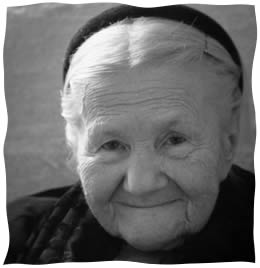
I recently learned about the story of Irena Sendler, a Catholic hero in Poland during WWII who helped save thousands of Jewish children by smuggling them out of the Warsaw Ghetto before their families could be seized and sent to the death camps. She could see what was at hand for Jews who had been isolated in the ghetto, so she found ways of rescuing both infants and larger children by becoming a “sewer specialist”: the escape routes led through the sewers. (That little detail struck a chord with me, having done my time in the sewers while I was a child held captive in a Romanian work camp in the 50s.) She would put infants into a tool box and had a larger burlap bag for older children. In her truck, she kept a dog whose barking covered any sounds the children made and discouraged searches of the truck. When she was discovered, the Nazis broke her legs and arms and beat her, yet she succeeded. The children survived. She kept their names and the names of their families in a jar, so that if their parents survived they could be reunited when the war ended. After the war, most of the parents had perished in the camps, and she found foster homes for those children.
How her story became famous enough to come to my attention is almost as remarkable as her life. She was unknown until a group of students in rural Kansas, looking for Holocaust stories as a National History Day project, discovered details of her life in a box of newspaper clips labeled “Other Schindlers.” They searched the Internet and found a website that confirmed she had saved the lives of 2,500 children. They produced a drama built around it called “Life in a Jar.” As they researched into her life, they received an email informing them she was still alive in Poland, so they wrote a letter to her. A correspondence began that led to a wonderful connection between generations and continents.
It resulted in the field trip of a lifetime: six students flew to Poland and followed an educational itinerary that Sendler created for them. They saw the Ghetto. They sat down and spoke with some of the people she had rescued, when they were children in the ghetto. Other research trips to Poland followed, and as a result, Sendler’s story has become well-enough known that Hallmark produced a movie entitled The Courageous Heart of Irena Sendler, which can be seen in an evaluation version on YouTube. Though Sendler died in 2008, she is becoming better and better known ever year, all thanks to those Midwestern school kids.
“Life in a Jar” has been performed nearly 300 times in the U.S., Canada, and Poland. A website devoted to her has attracted 30 million hits, and a teaching award in her name is awarded in both Poland and the U.S. and an educational foundation, the Lowell Milken Foundation has been formed to make her story known. And the media has produced more than 1500 stories on her life.
Though few of us have a chance to be heroes as Sendler was, risking our lives to save others, but she saw people in need around her, within her reach, and she acted on their behalf. We can all do that. There’s a boundless need for it.